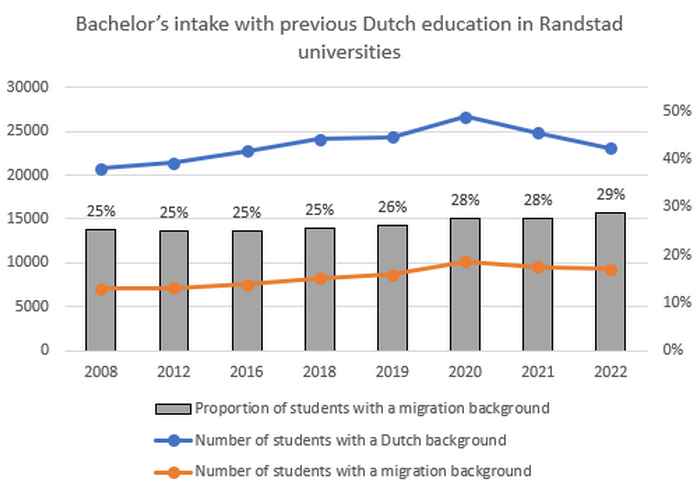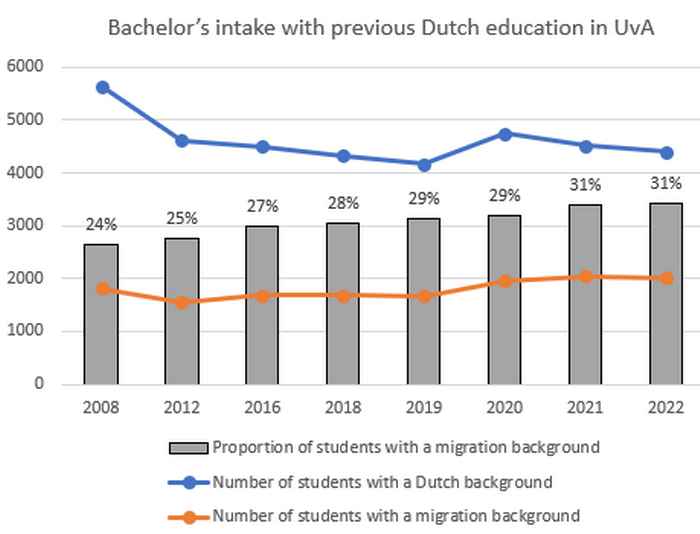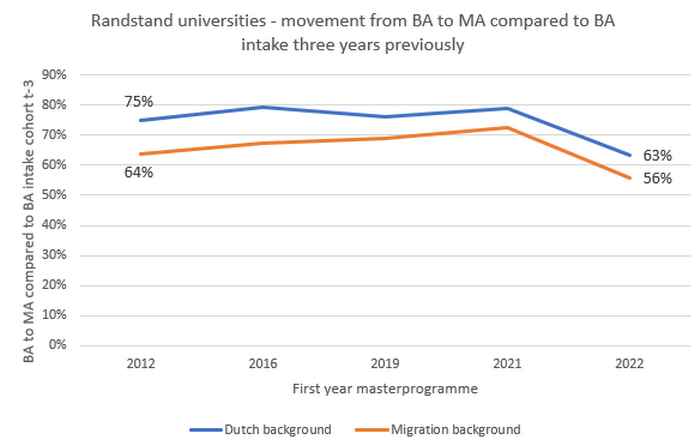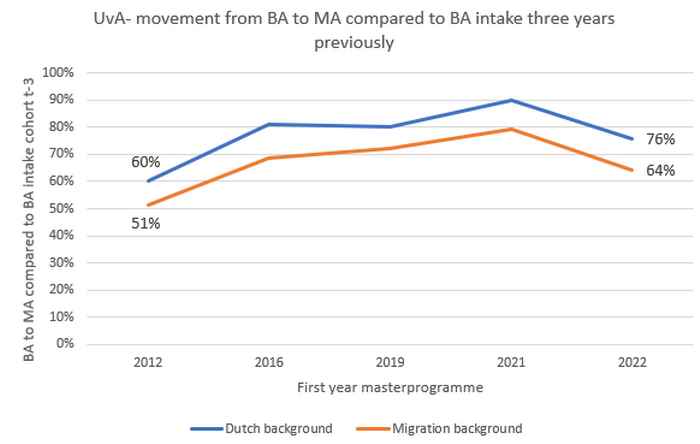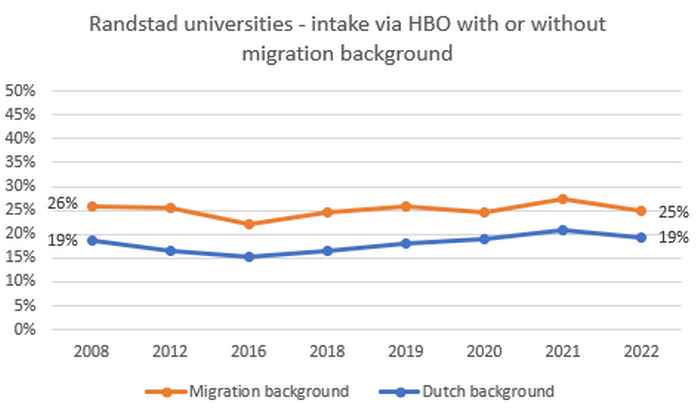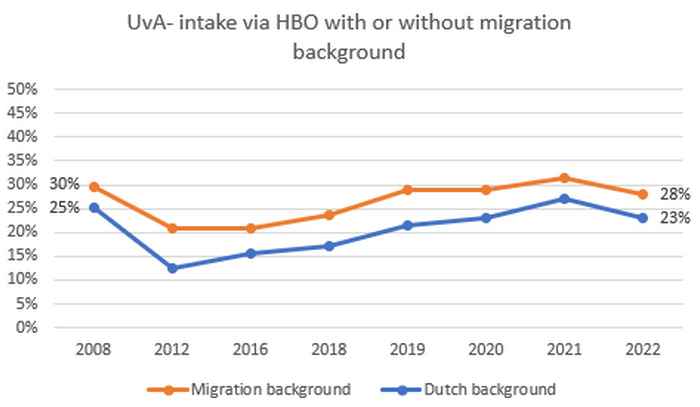New figures shed light on diversity of student population
8 February 2024
The UvA has explicit ambitions in the field of diversity, laid down in the 2019 Diversity Memorandum. This includes policy and actions that support students with a migration background on their way to and within the university. It has also been agreed that these actions will be based on insights and data about inflow and progression. The Central Diversity Office of the UvA - together with colleagues from the Vrije Universiteit Amsterdam, Leiden University, Utrecht University, Erasmus University Rotterdam and Wageningen University - has sought collaboration with the CBS, which has now published an initial dataset on the migration background of incoming Bachelor's and Master's students.
Bachelor’s intake
The number of Bachelor's students with a Dutch education and migration background is generally increasing. In particular, there has been a sharp increase in the number of students with an Asian or Moroccan background. But the share that these students comprise of the total student population has increased less: from 25% in 2008 to 29% in 2022, which, for urban areas like the Randstad, is still quite a modest share.
If we zoom in on the UvA, we see a slightly different picture. Here, too, we see an increase in the number of students with a migration background, especially students with a Moroccan background. At the same time, the Bachelor's degree intake of students with a Dutch background fell by 22%. As a result, the proportion of students with a migration background in the population of students with a Dutch previous education has risen to 31%. Compared to other Randstad universities, this is a relatively large increase.
Movement from BA to MA
If we compare the Master's intake with the Bachelor's intake three years earlier (i.e. the duration of a Bachelor's programme), the 'throughflow' of students with a migration background appears to be generally on average 10% lower than that of students with a Dutch background. Within the universities studied, fewer students with a migration background are moving on to a Master's degree at one of those universities. It is not possible to conclude from the figures whether students have moved on to a non-examined university or have entered the labour market. Further research would therefore be appropriate here, in order to be able to respond properly to this possibly limited flow of students with a migration background. Limited participation in Master's programmes also means that this group remains underrepresented further up the academic ladder.
Intake has been declining since 2021
At the same time, we see at all institutions examined that, since 2021, the intake for Bachelor's and Master's programmes has fallen sharply among students with previous Dutch education both with and without a migration background (see the tables above). In the Bachelor's programmes at the UvA, UU and WUR, the number of incoming students with a migration background remains roughly at the same level, while at the other universities the influx drops significantly. In the Master's programmes, the influx of both Dutch and migration background students decreased at all institutions in 2022 and at most also in 2021 (except for VU and WUR). This is seen most strongly among students with a Dutch background.
Intake via HBO
At the universities surveyed, a slightly larger proportion of students with a migration background enter via the HBO route. Based on intake via VWO and HBO routes, 25% of students with a migration background enter via HBO, versus 19% of students with a Dutch background. At the UvA this is 28% to 23%. The data makes no distinction between students with an HBO propaedeutic diploma or an HBO Bachelor's diploma. At the UvA, the route via HBO-BA became slightly more difficult after 2011. The growth in HBO intake at the UvA is therefore relatively low among students with a migration background.
Attention to the entire 'pipeline'
‘The inflow and throughflow of people with a migration background lags behind that of people without a migration background,’ concludes Machiel Keestra, Central Diversity Officer at the University of Amsterdam, based on these figures. 'Our Central Diversity Office also recognises this picture from our research regarding the promotion of people within the university. The problems arising from unequal opportunities therefore occur through the entire “pipeline” of education. Many factors influence this, and we must respond to them. Ultimately, more diversity and inclusion will be beneficial not only for these groups, but also for our education and research as a whole: after all, to solve the complex problems of our time we need a great diversity of experiences, expertise and insights.'
